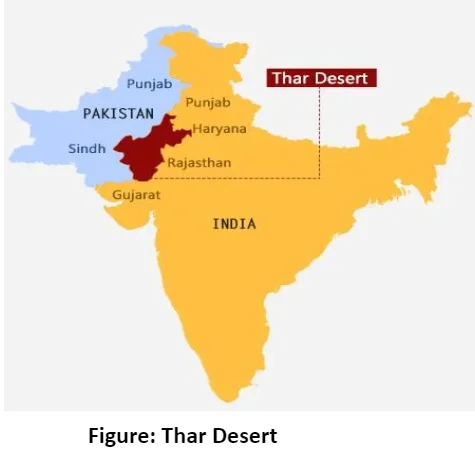![]() May 4, 2024
May 4, 2024
![]() 17289
17289
![]() 0
0
The Thar Desert, also known as the Great Indian Desert, is a vast arid region between India and Pakistan, covering about 200,000 square kilometers. Most of it lies within India, primarily in Rajasthan, but it also extends into Gujarat, Punjab, Haryana, and Sindh in Pakistan. Despite its harsh climate with low rainfall, the desert is rich in geological and natural wonders, including unique sand dunes, ephemeral rivers, and diverse wildlife.
Also known as the Great Indian Desert, spans 200,000 km2, forming a natural boundary between India and Pakistan.

| Must Read | |
| Current Affairs | Editorial Analysis |
| Upsc Notes | Upsc Blogs |
| NCERT Notes | Free Main Answer Writing |
| Related Articles | |
| Largest Desert in the World | Fossil and Time |
| Indus River System: Map, Tributaries, Origin And Length | Types Of Rocks: Igneous, Sedimentary, Metamorphic |
<div class="new-fform">
</div>

Latest Comments